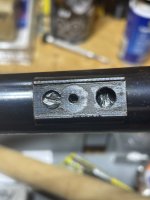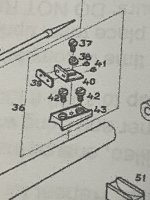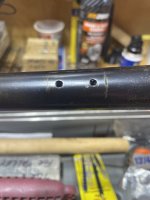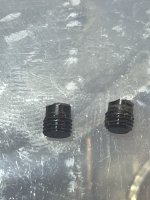Before you start drilling, which isn't a bad idea, remove the sight completely, if possible, so you can see what's going on.
I've never seen a reverse bit that small, but that doesn't mean they aren't available.
The biggest issue with drilling out those broken off ends, is centering your drill bit, especially tiny bits, onto the stem.
I've seen situations where people try using tiny bits and compound the issue by breaking off the bit, or in the case of one fellow, he drilled all the way through into the bore (extreme one off) he was using a hand drill.
Get a "center drill" of the proper diameter. They make them very small. Center drills have solid shanks and aren't "flexible" so if they're being held by a chuck in a drill press and the work is being held by a vice or clamp on the drill press table, the bit won't wander and screw up the threads.
You will end up with a very small hole in the broken off stem, but finding an appropriate "easy out" will be next to impossible
I use a home made "easy out" made from a very small screw driver, with the tip ground to a long point, so it will fit into the tiny hole.
Before trying to turn out the stem, apply a bit of heat, from a hand held torch, enough to make it to hot to touch, but not enough to change color.
This will help break the "friction weld" which often is created over the years of shooting, between the threads on the stem and those in the barrel.
While it's still hot, spray/dribble in some penetrating oil, the heat helps it to get around better. Let it sit until it cools.
Some people will suggest you "tap on the broken stem with a punch and hammer" to do the above job. DON'T DO IT. You will only expand the exposed end of the stem and make it more difficult to remove.
Often the above procedure is enough to loosen the stem enough to turn it out easily with finger pressure, if not, very lightly tap something into the hole, BE CAREFUL NOT TO EXPAND the stem, so you can apply light pressure to turn it out.
The next suggestion is to drill out the hole and tap for the next size up screw.










































































